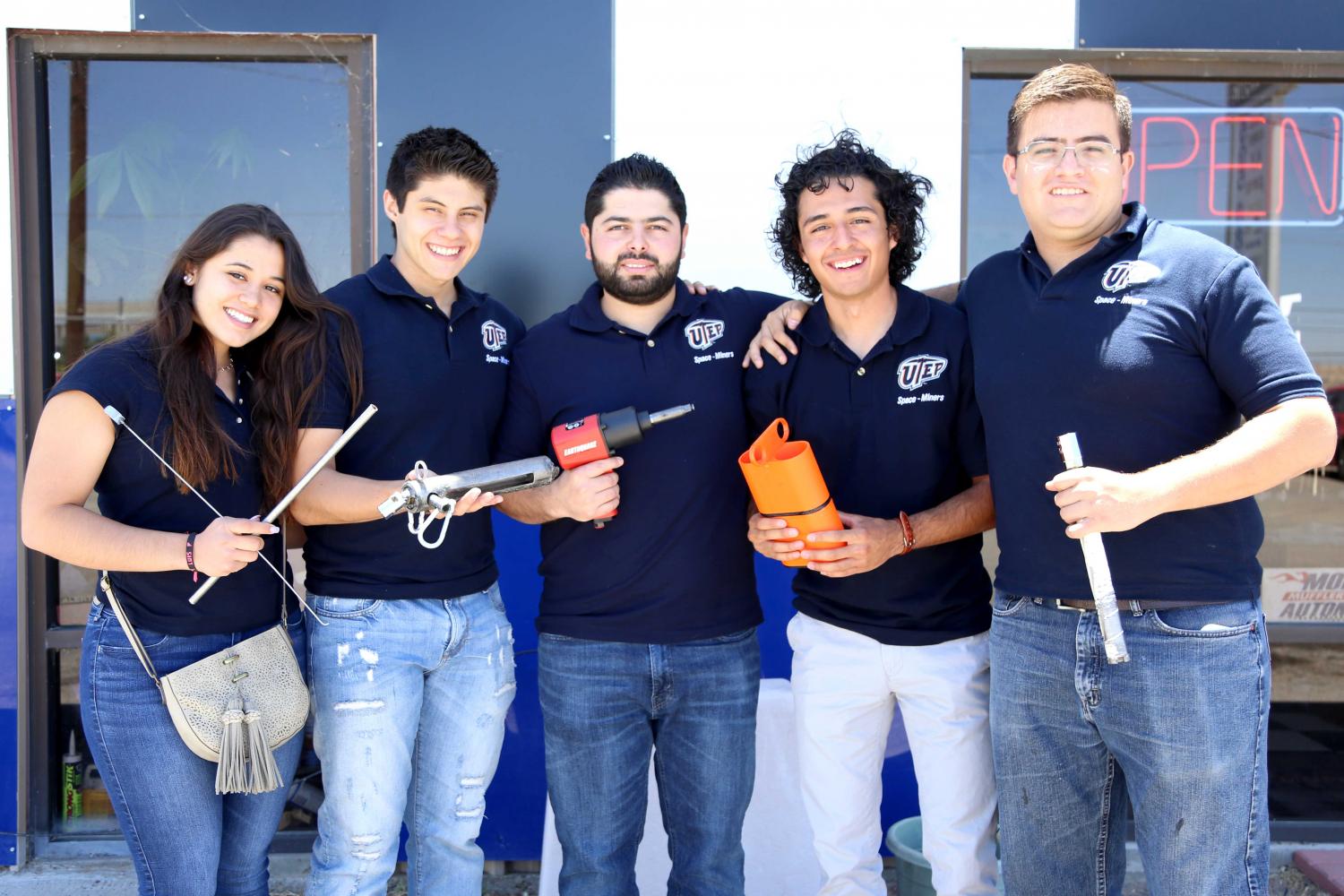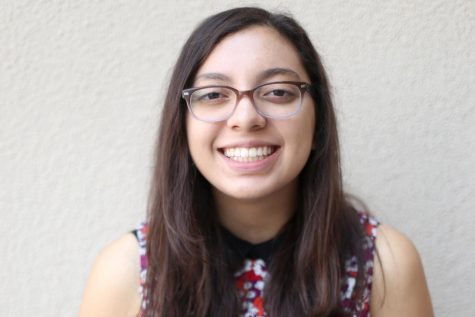A group of six UTEP engineering students have been chosen to build a prototype and test their design skills at NASA in Houston. The Space Miners will be participating in the subsurface sample challenge on May 24, as a part of NASA’s Micro-g NExT design challenges.
The students chosen for the challenge are Cesar Acosta, Briana Moreno, Hussam Amjad Alzateemeh, Alejandro Contreras, Luis Codina and Jarenny Santiesteban.
Each student is studying mechanical engineering, with the exception of Codina who is studying electrical engineering. UTEP mechanical engineering professor, Dr. Evgency Shafirovich, served as the team’s faculty advisor.
Although they weren’t approved to join the challenge until December, the team has been working together since September building their proposal.
“We tested (their prototype) and everything went all right, and we’re happy that we’ve done it and we are in it, that we are in this challenge, and it’s great that we get to do something for NASA,” said Alzateemeh. “Now we’re going to go and apply it in reality and see what happens.”
This is the ninth team selected from UTEP for NASA’s microgravity students’ program.
The Space Miners will test their prototype at the NASA Johnson Space Center Neutral Buoyancy Laboratory, a 40-foot deep pool where astronauts train for spacewalks.
The students have been working to develop an air-powered drilling tool with a sample collector for astronauts in order to obtain a subsurface sample of an asteroid or planet.
There are three design challenges for the team to pick from–Anchoring Device, Subsurface Sampling and Surface Sampling Device. They chose subsurface sampling because it seemed to be the most challenging one.
“We started off with three iterations of the design on paper and it looked really nice. It fit and it was so perfect and then we had to build it and simplify the design,” Acosta said. “This is our second iteration of the build. We’ve been through five iterations.”
Despite the limitations they faced, the team still did their best to work with what they had and went far and beyond to build their tool. There were 13 specific design requirements along with a list of materials they were and were not allowed to use.
“We picked everything through trial and error–a lot of trial and error,” Acosta said. “Initially we wanted it to be lightweight so we opted out of aluminum. Once we started building, it didn’t work out because steel and aluminum aren’t really compatible as far as welding.”
This proved tedious for the members as they had to be continually cross-referenced in order to ensure that they followed the guidelines. They also had to make sure that their tool can connect to the air power tools at NASA.
The team was allowed to get creative and build what they wanted as long as it followed the rules. Having no design models to reference, they had no idea what the tools from the other colleges looked like. When creating their design, they used the oil industry as a reference because of the core samples they have to collect.
“The idea was to get a subsurface sample. It has to be a cylinder, eight inches long, one inch in diameter. So we start thinking of a device or tool that can do that, like drill in the surface and take out the sample with the dimensions that are required,” Alzateemeh said. “Even core samples they use in construction and other fields.”
After the team started designing their prototype, they spoke with former astronaut and UTEP alumnus John “Danny” Olivas. Having him as a mentor helped the team get a better understanding of the tool they were creating. It also resulted in them changing the approach on the design.
They had not realized the size of the gloves made the astronaut’s fingers bigger, which resulted in the group deciding to change the design once again. This time, they decided to scale back to simplify the prototype. They are relying on the simplicity of their design to standout.
“He told us to not to only think of what’s a good tool to make, but think of the astronaut that’s going to use it. We weren’t thinking of that. That all factored into our design,” Codina said.
The team said it has gone the extra mile to create the prototype, branching outside of the school and their advisor to get better training and materials. They have been building and testing their tool at Montana Automotive, far away from UTEP.
“We could be so much better if we had better tools and better training, but we did our best,” Alzateemeh said.
Even though they worked outside of the school, UTEP still sponsored the team. Aiding the cause, NASA also offered stipends throughout the building process if the teams completed certain deliverables. Through the different stipends, the group was able to raise $1,000.
As they’ve completed their prototype and await the conference in Houston, the members said it was worth it because of all of the experience they’ve gained.
“Although we’re not getting paid for it, the experience is something that no one gets to take away from us,” Contreras said. “It was a lot like industry work, your project manager or your boss tells you ‘build this’ with all of the requirements, and then you do your first design, do research, and then you actually start building it and you run into issues.”
For Contreras, the team integration and dynamics were also key during the extensive process.
“There’s a lot of factors in communication with your team. Having a team is extremely important, I wouldn’t have been able to do it without them. We needed each other,” Contreras said.
With only one prototype, and no backups, the team is headed to Houston at the end of the month to take part in the Micro-G challenge at NASA. The NASA Micro-g Neutral Buoyancy Experiment Design Teams conference is set to run from May 24 to May 26.
“We tested it and everything went all right, and we’re happy that we’ve done it and we are in it, that we are in this challenge, and it’s great that we get to do something for NASA. Now we’re gonna go and apply it in reality and see what happens,” Alzateemeh said.












